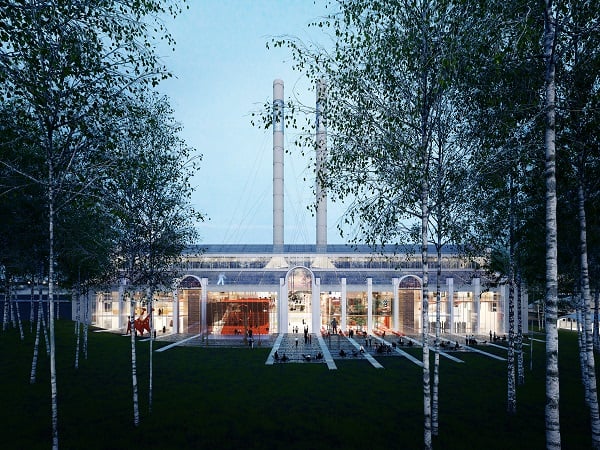
Leonid Mikhelson’s V-A-C Foundation is in the throes of constructing not only a vast new site for contemporary art in the center of Moscow, but an entire cultural ecosystem to underpin it. Set in “GES2,” a power station that was switched off this last Christmas, the V-A-C Foundation’s new headquarters will extend over two hectares of land in Moscow’s central Red October district. Rubber stamps permitting, renovation of the hundred-and-ten-year-old building will commence this autumn. Designed by Antonio Belvedere of Renzo Piano Building Workshop, current ambitions have GES2’s grand opening penciled in for spring 2019.
Currently listed by Forbes as “Russia’s richest man,” his estimated wealth of $16.2 billion derived from the gas and petrochemicals industries, Mikhelson has become an important supporter of the arts in the seven years since V-A-C’s inception. The foundation was a major donor to the Venice Biennales of art and architecture in the editions since 2013, and to the Saint Petersburg-based Manifesta in 2014. Since 2012 it has run an annual curatorial summer school in Moscow, which this year received over 100 applications for its 19 places.
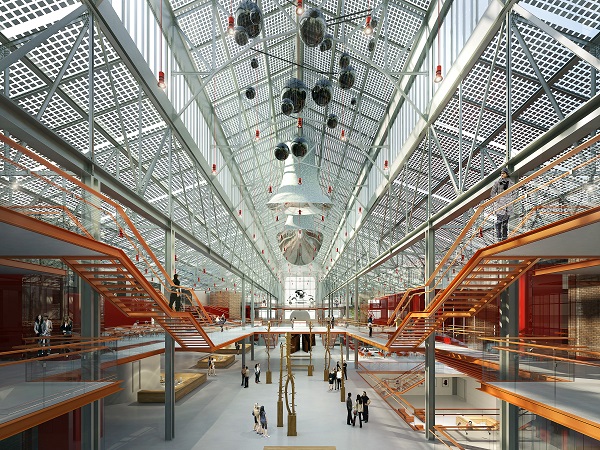
Rendering View of the Centrale Nave, RPBW, 2015. courtesy of v-A-C Foundation
As well as traveling shows, commissions and works from Mikhelson and V-A-C’s collection—acquisitions for which have been steered, since 2009, by the Foundation’s director Teresa Iarocci Mavica—GES2 will house a considerable tertiary education program, and living quarters for artist residencies. Both are gestures toward what one might term cultural sustainability and locovore hiring practice: plainly put, this is a museum that will grow its own (often Russian) art, and the (often Russian) curators to nurture it, theorists to analyze it, archivists to tend it, and publishers to canonize it.
Rounding off the circle, in the three years attendant on the museum’s completion, V-A-C will toil to bulk up the audience for contemporary art in its home city, a project which will include, among other things, the development of close ties to schools. It’s all very well gifting a city with a new cathedral to culture, but there is no guarantee that audiences will pour forth in an avid torrent.
V-A-C harbors few illusions about Muscovites’ possible reluctance to engage with new art. Belvedere has conceived the museum almost as an elegant trap—a cultural space into which one is lured unawares, to sup on various enticements while transforming over gradual exposure, from snout to tail, into a ravenous art hog. A piazza will be created in front of the museum: a public space that extends into the building’s entrance hall, housing restaurants, cafes, a bookshop and other temptations. Within the museum—which is to be free and un-ticketted—the central strip is imagined as a boulevard through which the public might pass and engage with the territory of art in body, if not in mind.
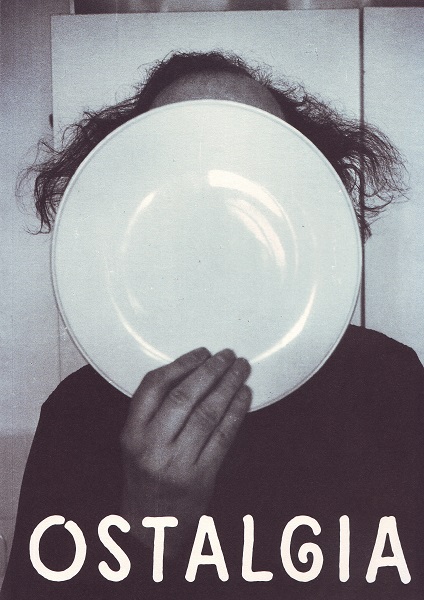
“Ostalgia” catalogue cover. courtesy of V-A-C Foundation
Internationally, the Foundation has already shored up institutional ties with the New Museum in New York (for which it co-produced the 2011 exhibition “Ostalgia”), the UK’s Tate museums (for which it is supporting the appointment of two curators for the Russian collection and Acquisition Fund until 2018), and London’s Whitechapel gallery, (which in the 2014-15 season presented displays from the V-A-C collection curated by Mike Nelson, Fiona Banner, Lynette Yiadom-Boakye and James Richards).
V-A-C has also nurtured links closer to home, staging exhibitions in the grandiose “Grain” pavilion at the All-Russian Exhibition Centre, and in Moscow’s Institute for African Studies. Such co-operative outreach paints a picture of an institution readying itself for engagement at the local level while embedding itself on the international scene. V-A-C’s resolve to look both inward to Russia and outward to the wider art world will be cemented by the unveiling of a first permanent site for the foundation at the Palazzo delle Zattere in Venice, an exhibition and education space that will open its doors at next year’s Venice Biennale.
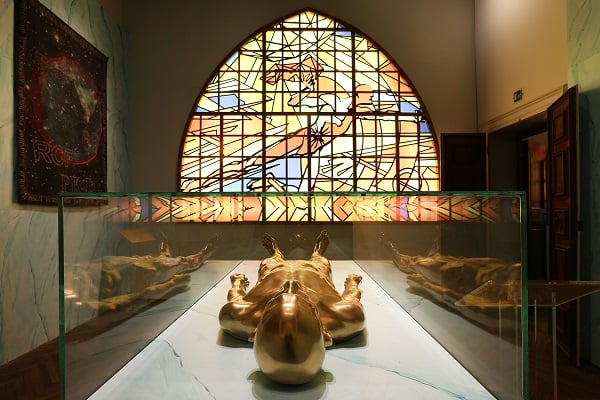
Future Histories exhibition at the Venice Biennale 2015. Courtesy of V-A-C Foundation
So much for the institutions, what about the art? A visit to Mikhelson’s Otlichnik estate some 45 minutes drive outside Moscow revealed a Carsten Höller slide installed in the grounds. The floating fish balloons of a Philippe Parreno piece bobbed around the atrium of V-A-C’s onsite gallery and intruded cheekily on an exhibition of intimately scaled works by Alighiero Boetti. The art storage facility of the same building—designed by experimental Moscow architecture studio MEL Space—reveal works by Sarah Morris, Gerhard Richter, Tauba Auerbach, Cindy Sherman, Gary Hume, and other names familiar from the contemporary checklist. There’s a photo by Sergey Sapozhnikov, but at first glance, fewer Russian and East European artists immediately evident than V-A-C’s stated dedication to the same might suggest.
While construction teams prepare to break ground on the GES2 site, and Palazzo delle Zattere is readied for its first exhibition, elsewhere the foundation is pursuing its activities at a hyperactive rate. This September sees the launch of the V-A-C Live program at London’s Whitechapel Gallery with three consecutive nights of performance that draw on the theater and cabaret of Russia’s early twentieth-century avant-gardes.
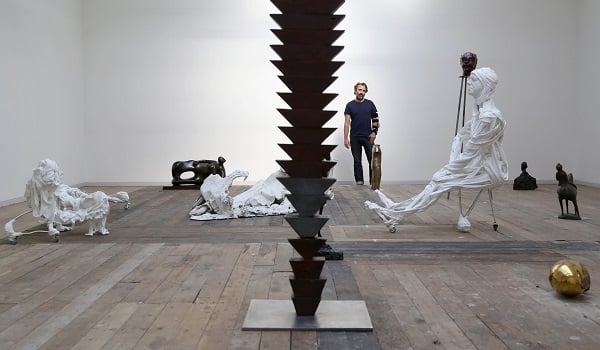
Artist Mike Nelson with sculptural works which form part of the V-A-C collection that Nelson has selected for the exhibition at the Whitechapel Gallery in London, 2014. Courtesy of Geoff Caddick/PA
In a rented top floor site in a 1970s block in the north of Moscow, Kirill Glushchenko’s exhibition “Our Days are Rich and Bright” came to a close this last weekend. A beautifully designed show of books and field recordings created by the young artist’s fictional publishing house Glushchenkoizdat, the overall project riffed off Soviet-era travel guides and the living heritage of brutal-modernist and prefabricated architecture. Curated by V-A-C’s head of exhibitions Katerina Chuchalina, this unconventional and generously installed exhibition presaged well for the Foundation’s dedication to support young artists in the future.
In a private dinner with Mavica, the foundation director admitted that V-A-C had come across Glushchenko’s project quite simply because he had dropped her an email. For such a well-resourced institution, this direct relationship with Russia’s grassroots art scene felt emblematic of a healthy lack of pomposity.

No hay comentarios:
Publicar un comentario